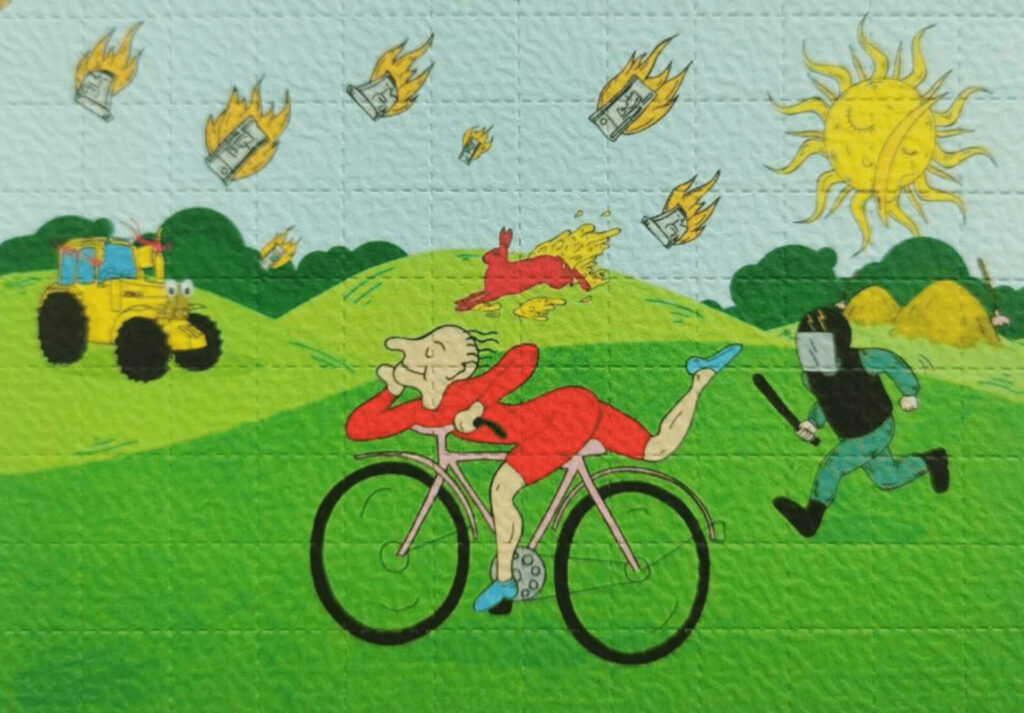
Finding Flow: Navigating Your Creative Block with Microdosing
For many who walk the path of creativity, the dreaded ‘creative block’ is a periodical occurrence that all artists know too well. Amidst deadlines,
DISCLAIMER
* We do not condone the use of any illegal substances whatsoever. This piece of writing was created strictly for educational purposes only. Please read with caution and use this information responsibly. *
Albert Hofmann was a Swiss pharmacological researcher who accidentally discovered LSD in 1938. He’d synthesized the ergot fungus, got some of it on his skin and then proceeded to experience the first-ever LSD trip. By the 1950s, scientific study of LSD for its psychological benefits was in full swing.
Even the American CIA looked at LSD as a substance for mind-control. LSD became the poster child for the hippie generation in the 1960s. Not long after, it was banned by national governments and condemned by the United Nations.
While all that was going on, Hofmann experimented with microdosing. Hofmann
says microdosing LSD helped him think clearer. He lived to 102, continuing to give speeches right up to his death. He never stopped praising the benefits of microdosing.

Hofmann may have been the first to microdose LSD. But he likely wasn’t the first human to ever microdose. Many South American Indigenous cultures have used different psychedelics for centuries. For example, ayahuasca is an integral part of the heritage and culture of places like Peru. Indigenous groups have also known about microdosing. The shamans explore plant medicine at every dose level. They have long praised the benefits of microdosing.
Microdosing psychedelics may have originated somewhere in our evolutionary history. Terence McKenna formulated the “stoned ape” theory of human evolution. As the African continent became drier toward the end of the last ice age, jungles turned into grasslands. Our tree-dwelling ancestors now had to fight to survive on the ground. We had to become hunter-gatherers.
McKenna proposes that as we were hunting and gathering, our ancestors came across psilocybin mushrooms. Magic mushrooms are known to grow on the droppings of ruminant animals. In large trips, the experience may have sparked a consciousness revolution. In sub-perceptual doses or microdoses, psilocybin improves our vision and hunting skills. For hunter-gatherers adapting to the African grasslands, optimal vision and heightened senses was crucial.
The “stoned ape” theory hasn’t swayed many in the academic community. But whether true or not, it’s clear that microdosing has its benefits for human cognition. Back in the 20th century, a team of researchers led by Dr. James Fadiman began researching psychedelics in 1966. They ran an experiment that looked at mescaline. Specifically, creative problem-solving. And the results were positive. Unfortunately, the US government banned scientific research on psychedelics shortly after this experiment.
However, Dr. James Fadiman didn’t give up. He began independent investigations into microdosing. Fadiman began collecting reports from people who experimented with microdosing. He published his findings in a book, The Psychedelic Explorer’s Guide.
Dr. Fadiman’s book is still the staple resource for researching microdosing. Later, Fadiman created a protocol to assist people interested in microdosing. Fadiman is still accepting reports, especially among people microdosing for medical reasons.
The most recent history of microdosing has been one of increased interest and awareness. Beginning in the mid-2010s with articles in Rolling Stone and Forbes, microdosing has become a popular trend. Tech entrepreneurs in Silicon Valley came forward about how they benefited from microdosing. Internet personalities like Joe Rogan and Tim Ferris have promoted the benefits of microdosing to the general public, as well.
Fortunately, research is making a comeback. Johns Hopkins has an entire Center for Psychedelic and Consciousness Research. The Center has yielded considerable progress into psychedelics’ medicinal and therapeutic benefits. Maastricht University, Bergen University, Imperial College London, and the Beckley Foundation have all studied microdosing.
There are plenty of studies underway and many planned for the future. Studies that will examine the effects of microdosing on mood, creativity, cognitive functions, and general well-being. It looks as if the history of microdosing is just getting started. What a time to be alive!
Don’t worry, with Journey, you can have the best of both worlds!
Browse our microdosing shop where we offer both legal Psilocybin and Lysergamide products!
Everyone’s microdosing journey looks different. We offer both options so you aren’t limited to one choice!

For many who walk the path of creativity, the dreaded ‘creative block’ is a periodical occurrence that all artists know too well. Amidst deadlines,

For the eager minds of the fitness world, discovering fresh ways to elevate their workout game is akin to furthering your journey. Microdosing, a

Let’s face it: New Year resolutions are super tough! As the New Year rolled in, hearts around the world sang with hope, filled with

As the sun reaches its highest point in the sky during the summer solstice and the darkest night looms in the depths of

In this blog, we dive into the transformative practice of immersing oneself in cold water and explore the remarkable benefits it offers. Discover the

Lion’s Mane Mushroom is an all-natural species of fungi that has been in use for centuries to help people improve their health and
GET 10% DISCOUNT WITH NOTIFIED ABOUT THE LATEST NEWS AND UPDATES. NO SPAM, WE PROMISE!
FREE Tracked shipping on orders over €250 to EU countries.
Monday- Friday 8.30am- 5pm (CET)
A range of options available
Guaranteed delivery or your money back